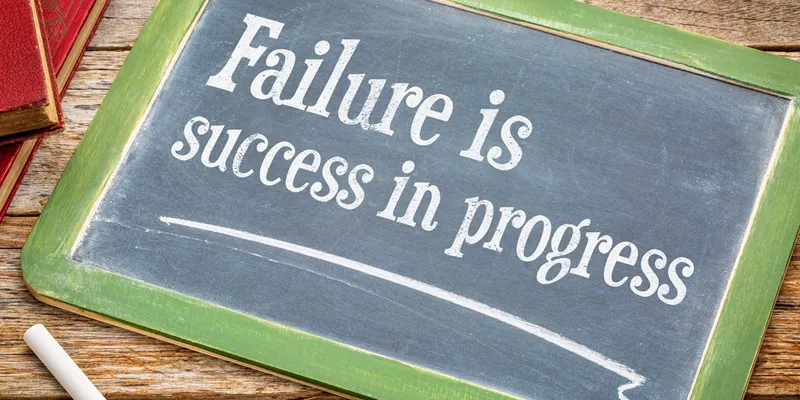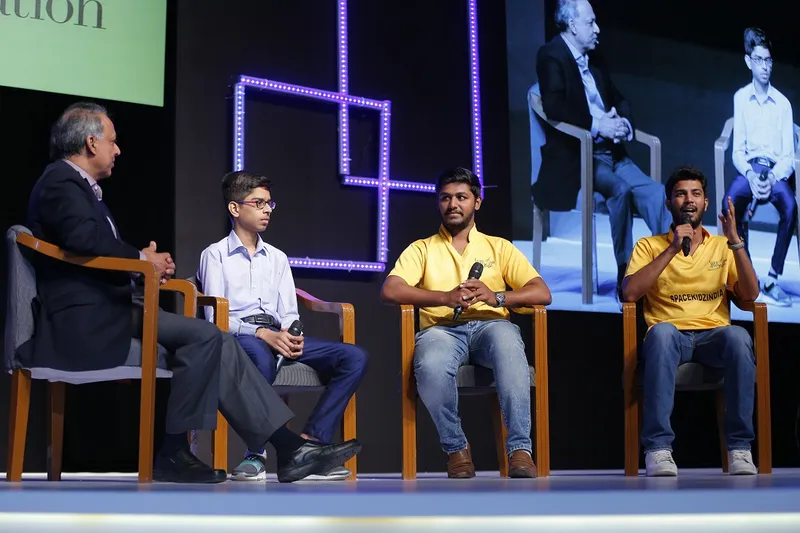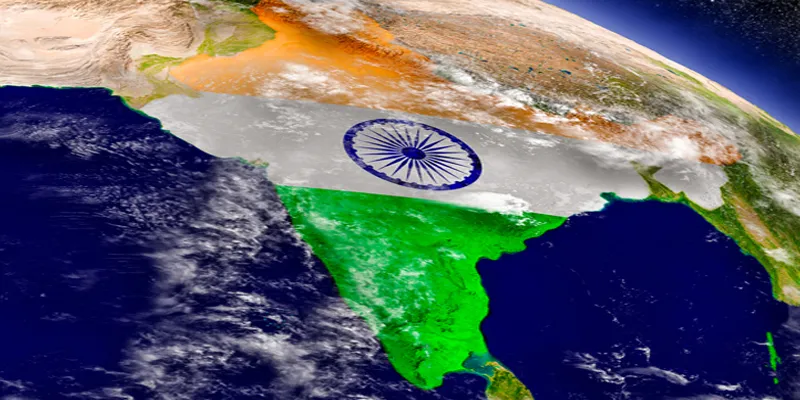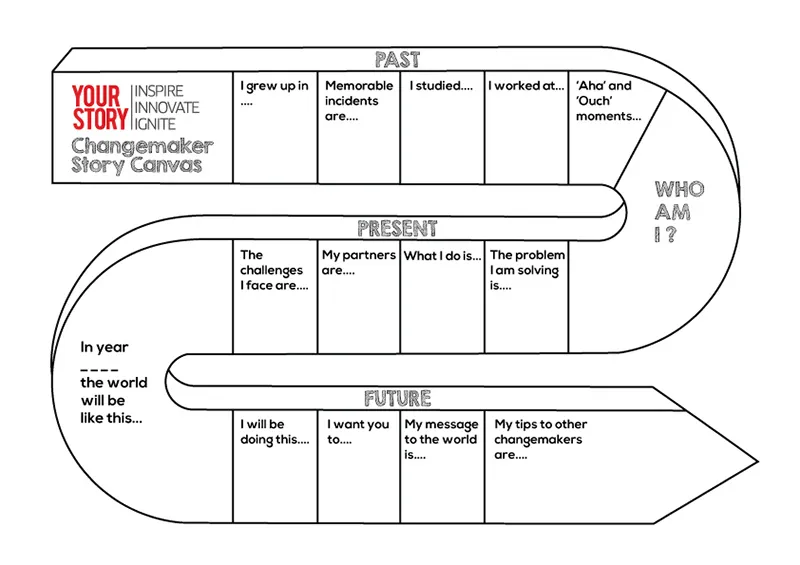Creativity, courage, customers: 12 startup tips from the Marico Innovation Foundation Awards 2018
The seventh Marico Innovation Foundation (MIF) Awards, held recently in Mumbai, featured insights from a range of founders, young innovators and corporate leaders.

The MIF 2018 startup winners included ideaForge, Rivigo Logistics, Tonbo Imaging, Incredible Devices, Forus Health, and Ecolibrium Energy; global gamechanger awards went to Reliance Jio and India Stack.
There were keynotes and addresses by R. Mashelkar, former DG of CSIR; Rajan Anandan, MD of Google India; Kiran Thomas, IT President of Reliance Jio; and Sanjay Jain of India Stack. There was also an inspiring panel of young innovators, featuring Space Kidz India and drone whizkid Harshwardhan Zala.
Here are 12 takeaways for entrepreneurs from the inspiring two-hour event. See also YourStory’s interview with Marico Chairman Harsh Mariwala, a writeup on their Ascent Foundation, and profiles of their 2018 award winners.
- FAIL = ‘First Attempt In Learning’
The startup journey is full of mistakes, errors and failures in an environment of uncertainty, but they must be interpreted with a different mindset. “Fail is only the first attempt in learning,” joked Mashelkar. (See also my reviews of the books Failing to Succeed, Fail Fast, and Fail Better.)
Failure can occur in the stages of prototyping, working product, or scaling to the mass market – but startups need to go right through to the finishing line. Startup India must also lead to “Finish-up India” – finishing at the top of the world, urged Mashelkar. Startups should pole-vault, not just leapfrog – and venture capital investors need to dream big and become “adventure capital”.

- Bio-mimicry
Human beings are relatively late entrants on Planet Earth, whereas Mother Nature has been innovating for billions of years, and can provide multiple frameworks for innovators (see my book review of Cross-Industry Innovation). Man-made cameras over the last two hundred years have just one lens or eye – whereas dragon flies have compound eyes with 30,000 facets, according to Arvind Lakshmikumar, Founder and CEO of Tonbo Imaging.
Inspired by the multi-eye imaging model from nature, Tonbo Imaging has developed multi-lens vision systems that are used by the defense industry in India and other countries. Other use cases are industrial automation and autonomous vehicles, according to Arvind.
- Innovation is also in savings
Innovation does not always have to be about new products for doing new things – it can also be about adding efficiencies and savings in existing processes (see my book review of Ten Types of Innovation). For example, catheter clean-and-reuse processes have reduced costs of heart operations, according to Vikram Goel, Founder of Incredible Devices.
The startup’s Catheter Reprocessing System (CRS) has led to better savings and improved health for a larger number of patients, said Vikram. The automatic computer-guided cleaning machine reduces the fallout of human error; the catheters can be reused about 10 times.

- Ignore the naysayers
Innovators come up with ideas that may seem crazy and even wild at first, but founders with conviction must ignore the naysayers and persist nonetheless. “Many people did not believe that a student team so young could get involved in space projects, and even called us monkeys,” recalled Tanishq Dwivedi and Yagna Sai of Space Kidz, who made the world's lightest satellite.
Their micro-satellite, called KalamSat, weighs only 64 grams and was launched by NASA. “People who want to mock you will always mock you,” said the Space Kidz team. They were also the first group of Indian students to launch a helium weather balloon into space, he added.
- Frugal innovation
Startups don’t have the large R&D resources of corporates or government labs, but most learn and innovate nonetheless (see my book reviews of Frugal Innovation and A Beautiful Constraint). The Space Kidz team did not have access to accelerators, but simulated the effects of gravity for their micro-satellite by tying it to the blade of a fan and turning it on to full speed.
Whizkid Harshwardhan Zala, who designed landmine detection drones for the Indian Army at the age of 14, was still in school when he decided he wanted to learn about aeronautics and signal processing. “I spent 12 hours a day in a cybercafé learning about these subjects,” said the prodigy from Gujarat.
- Blend business with social impact
Technology and profit may be great motivators and pull factors, but the joy of social enterprise is even greater. Tech4Good founders this year included Rivigo Logistics, Incredible Devices, and Forus Health.
“We help ensure that children have the right to vision,” said K. Chandrasekhar, Founder of Forus Health, which makes low-cost portable retina scanners for premature babies. Early detection of eye defects can spur interventions to restore eyesight. “We believe that everyone is born with the ability to impact someone’s life,” Chandrasekhar said, urging the audience to embrace social entrepreneurship.

- Metrics and impacts
It is tempting to focus only on numerical measures of innovation impacts, but the qualitative impacts can be even more powerful and inspiring. Deepak Garg was a McKinsey consultant for eight years, and decided to launch a startup in the transportation space.
Trucking is a backbone of India’s economy, but truck drivers live in appalling conditions. “They are even regarded as the 37th caste, outside of the 36 castes in India’s social system,” said Deepak. His startup, Rivigo, has developed a relay model of truck routes.
This leads to efficient and safer transportation, but the best impacts are in improved lifestyle of the truck drivers. They can return home each day, lead healthier lives, and spend more time with their families, said Deepak.
“Businesses should solve social problems beyond approaches like CSR or charity,” he urged. Rivigo’s solution based on pit-stops for truckers and a baton-based relay can also be extended to other geographies.
- India is a big enough market
Hopefully the days of “brain drain” are behind us, as more and more students choose to stay on in India and launch their startups. “Going abroad may be the easier path to success,” said Ankit Mehta, Founder of ideaForge, which makes drones for India’s defense sector.
India may be a harder place to do business but things are improving for startups and there are massive markets in the consumer, business and defense sectors, said Ankit. The company’s drones can fly for up to 60 minutes, and weigh less than three kilos. They were also used to track survivors during the 2013 floods in Uttarakhand.

- The Fourth Industrial Revolution
While much media attention understandably focuses on the consumer internet sector, there are major developments happening in the manufacturing sector. The Fourth Industrial Revolution, moving beyond the steam, electric and IT waves, includes manufacturing augmented with IoT, AI, Big Data and analytics.
This opens up huge markets for startups that can provide services such as predictive and preventive insights. (See the frameworks and examples in my reviews of the books Code Halo and Connected by Design.)
Ecolibrium Energy uses a combination of IoT and ML on “digital twin” models for machinery and factories. This helps reduce downtime and energy consumption, according to Harit Soni, founder of the startup. The company has a catchy slogan to describe its offering: ‘Predictive analytics. Productive assets.’
- Innovate at scale
Thanks to massive rollout of 4G mobile broadband, India has leapt from No. 150 in the world for consumption of mobile data to No. 1 in the world, according to Kiran Thomas of Reliance Jio.
Add to this India’s youth dividend (63 percent of India’s population is less than 35 years of age), and you have a market ripe for digitally-enabled business models. “There is no legacy technology holding us back,” said Kiran, urging innovators to leapfrog ahead and innovate for a market of a billion.

- Think ecosystem
Now more than ever, startups need to cultivate ecosystem linkages and partnerships to scale up their offerings. A great example is India Stack, which consists of eight platforms including Aadhar, eKYC, eSign, UPI Bhim, DigiLocker, and Bharat Bill Pay.
The Fast Tag platform will enable electronic toll collection and improve the efficiency of the transportation system, said Sanjay Jain of India Stack. SMEs will benefit hugely from these platforms, including GST – “good and simple tax,” he joked.
India has an estimated 1.2 billion mobile users, 462 million Internet users, and 375 million social media users, according to Sanjay. He added that Aadhar is the first public platform to cross a billion users (all the others are private and are in the US, such as Facebook).
India will move from being a data poor to data rich society in three years, said Sanjay. “Data is the foundation of the next set of wealth,” he predicted, as cross-linkages extract more value from transaction patterns.
- Beyond automation: augmented intelligence
While there is much hype and even fear about massive job loss due to artificial intelligence (AI), the fact is there is a lot to gain from blended models like augmented intelligence.
“Google is now an AI-first company,” said Rajan Anandan of Google. The search giant had earlier re-positioned itself as a mobile-first company, and has now rolled out AI across all its product ranges.
The world’s population is 7.6 billion, of which 3.5 billion are online; there are also 20 billion connected devices, according to Rajan. Three key trends driving future innovation are connectivity, smart machines, and new business models.
For example, Policy Bazaar is using an ML-based chatbot called P-Bee (‘policy bee’) and has successfully increased its volume of sales to 13,000 conversions a month, said Rajan. He added that AI will also be used to drive the next wave of internet growth in India, defined by the ‘3 Vs’ — voice, video, and vernacular.
Indian language search is growing 10X faster than English search in the country, according to Rajan. Digital along with AI will transform India’s agriculture, healthcare, education and transportation sectors, predicted Rajan. For example, disease outbreak can be predicted in advance by analysing health indicators.

- Document your story and celebrate your successes
The best source of learning for entrepreneurs is from other entrepreneurs. It is important for founders to document their journey and share stories and best practices; this can improve the success rates of their peers. See for example YourStory’s ChangeMaker Story Canvas as a way of structuring founder narratives.
Marico Innovation Foundation first published a book of successful innovator stories in 2014. The second batch of startup stories from its Scale Up initiative will be published next year, said Marico Chairman Harsh Mariwala.
YourStory looks forward to reviewing the book, and to covering the next awards. The awards are held every two years – but given the pace of tech transformation, perhaps the awards can be held every year. It would be great to have more women innovators featured as well – not a single founder or speaker this year was a woman.
See also YourStory’s profile of the promising Tech30 startups each year, unveiled at the flagship TechSparks conference.








